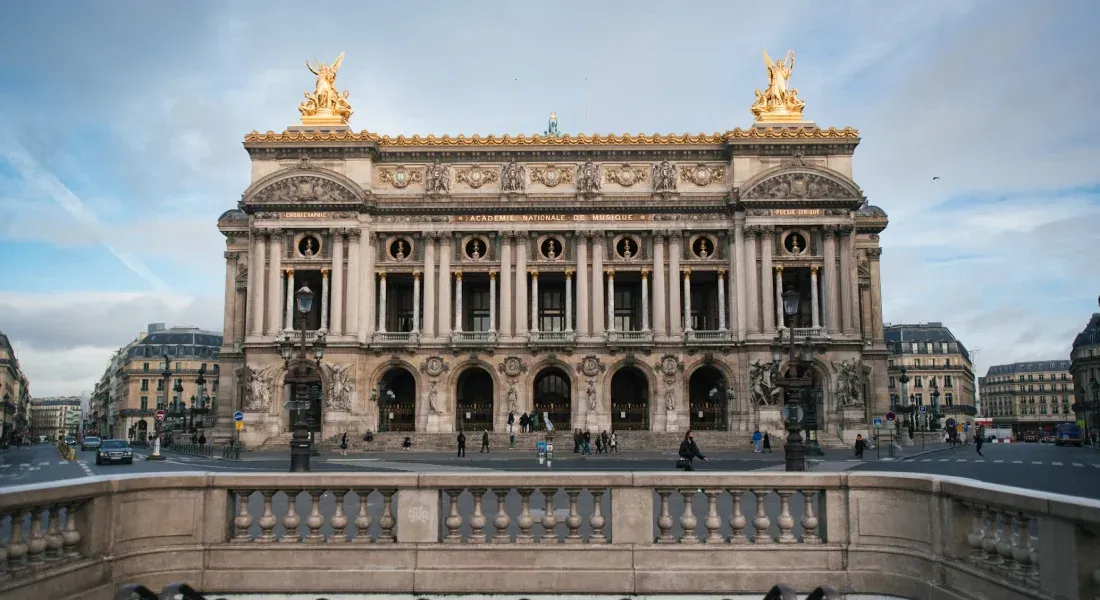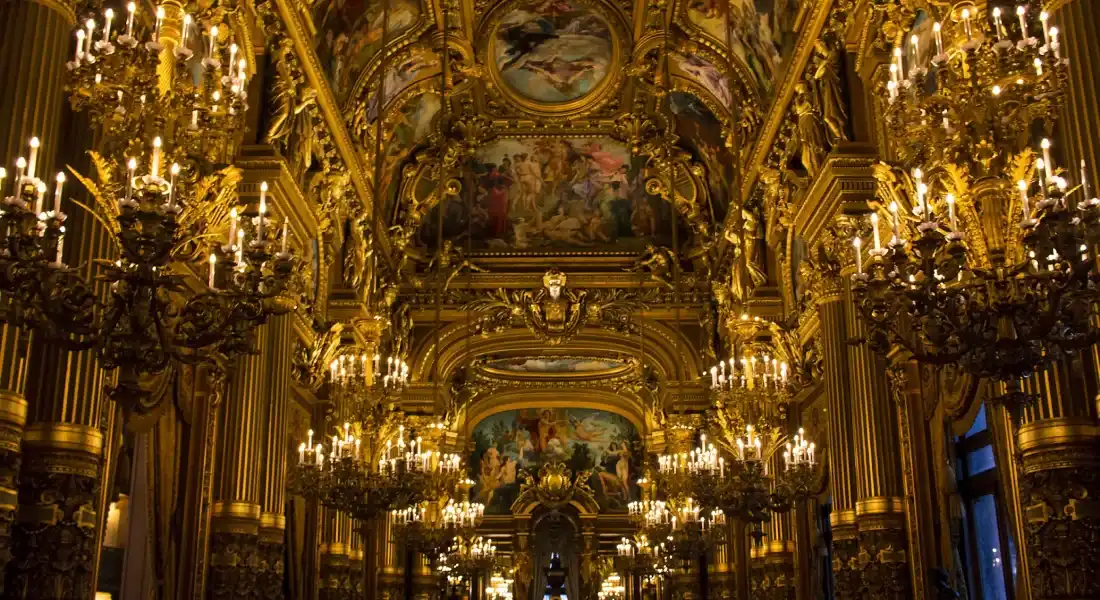Opéra Garnier, also known as Palais Garnier, stands as a testament to the grandeur and elegance of Parisian architecture. This iconic opera house, with its opulent interiors and magnificent façade, is one of the most famous landmarks in Paris. Whether you are a lover of the performing arts or an architecture enthusiast, a visit to Opéra Garnier offers a captivating glimpse into the cultural and historical richness of Paris.

The history of Opéra Garnier dates back to the mid-19th century when it was commissioned as part of the extensive reconstruction of Paris under Emperor Napoleon III. The construction of the opera house was a key component of Baron Haussmann’s grand vision to transform Paris into a modern metropolis. In 1860, a design competition was held, and the relatively unknown architect Charles Garnier won the commission with his ambitious and elaborate plans.
Construction of Opéra Garnier began in 1861 and took 15 years to complete, with numerous delays caused by political upheaval, war, and financial challenges. The opera house was finally inaugurated on January 5, 1875, with a gala performance attended by the who’s who of Parisian society. Since then, Opéra Garnier has been a symbol of Paris’s cultural life, hosting countless operas, ballets, and other performances.
Opéra Garnier is a masterpiece of Beaux-Arts architecture, a style characterized by its grandeur, symmetry, and elaborate ornamentation. Charles Garnier, the architect behind this magnificent structure, designed the opera house to be a “palace of pleasure” that would embody the artistic and cultural spirit of the time. The building’s exterior is adorned with sculptures, columns, and friezes that reflect themes of music and dance, setting the tone for the opulence found within.
One of the most striking features of Opéra Garnier is its grand façade, which faces the bustling Avenue de l’Opéra. The façade is richly decorated with statues representing Harmony and Poetry, as well as busts of famous composers such as Mozart, Beethoven, and Rossini. The crowning glory is the gilded statue of Apollo, the god of music and poetry, standing atop the central pediment.
Upon entering the opera house, visitors are greeted by the grand staircase, a true marvel of architectural design. The staircase, made of white marble with red and green marble balustrades, sweeps upwards in a majestic double-helix, leading to the various levels of the auditorium. The opulent foyer, with its gilded decorations, chandeliers, and mirrors, further enhances the sense of luxury and grandeur.
The auditorium of Opéra Garnier is a spectacle in itself. With a seating capacity of nearly 2,000, the horseshoe-shaped auditorium is adorned with red velvet, gold leaf, and intricate carvings. The ceiling, painted by Marc Chagall in 1964, adds a modern touch to the historic interior, depicting scenes from famous operas.
The opera house also features the grand foyer, reminiscent of a royal palace with its high ceilings, frescoes, and glittering chandeliers. This space was designed as a place for socializing during intermissions and is one of the most photographed areas of the building. Other notable features include the Rotonde des Abonnés, the Salon du Glacier, and the library-museum of the opera, which houses a collection of costumes, set designs, and other memorabilia.

Booking tickets for a performance at Opéra Garnier is a straightforward process, but due to the popularity of the venue, it is advisable to plan ahead. Tickets can be purchased online through the official Opéra Garnier website or other authorized ticket vendors. The website provides a detailed schedule of upcoming performances, including operas, ballets, and concerts, along with ticket prices and availability.
When booking, you can choose from various seating options, ranging from premium seats with the best views to more affordable options. Prices vary depending on the performance and seating category. For those interested in a guided tour of the opera house, tickets can also be purchased online. These tours offer an in-depth exploration of the building’s history, architecture, and behind-the-scenes areas not typically accessible to the public.
It is worth noting that Opéra Garnier offers discounted tickets for students, seniors, and groups, making it more accessible to a wider audience. Additionally, last-minute tickets are sometimes available at the box office, although this can be a risky option due to the high demand for popular performances.
Opéra Garnier is located in the 9th arrondissement of Paris, a central and vibrant area known for its shopping, dining, and cultural attractions. The exact address is:
Opéra Garnier, Place de l’Opéra, 75009 Paris, France
The opera house is easily accessible by various means of transportation. The nearest metro station is Opéra, served by lines 3, 7, and 8, providing convenient access from different parts of the city. The RER A line also stops at Auber station, a short walk from the opera house. For those traveling by bus, several routes, including lines 20, 21, 22, 27, 29, 42, 52, 53, 66, 68, 81, and 95, stop nearby.
If you prefer to explore Paris on foot, Opéra Garnier is within walking distance of other notable attractions such as the Louvre Museum, Place Vendôme, and the Grands Boulevards. This makes it an ideal starting point for a day of sightseeing and cultural immersion in the heart of Paris.
